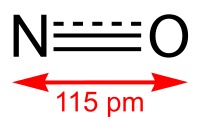
Photo from wikipedia
Background: The incidence of metabolic syndrome is increasing worldwide and this is mainly attributed to high carbohydrate intake, especially of fructose, and sedentary lifestyles. Nitric oxide (NO), which is synthesized… Click to show full abstract
Background: The incidence of metabolic syndrome is increasing worldwide and this is mainly attributed to high carbohydrate intake, especially of fructose, and sedentary lifestyles. Nitric oxide (NO), which is synthesized by nitric oxide synthase (NOS) enzymes, is a crucial molecule for endothelial and renal health. Asymmetric dimethylarginine (ADMA) is the most potent inhibitor of NOS and it is degraded by dimethylarginine dimethylaminohydrolase (DDAH). The aim of this study was to investigate the effects of melatonin on renal NO-ADMA metabolism using a metabolic syndrome model achieved by fructose administration. Methods: Thirty-two rats were randomly divided into four groups (n = 8): (1) control group, (2) fructose group, (3) melatonin group, and (4) fructose + melatonin group. Fructose (20%) was given in drinking water. Melatonin [20 mg/(kg·day)] was administered in 0.1% ethanol solution. After 8 weeks, kidney tissues were collected to measure tissue levels of nitrite/nitrate (NOx), ADMA, arginine, symmetric dimethylarginine, DDAH activity, and endothelial NOS (eNOS) and inducible NOS (iNOS) protein levels. Results: Fructose led to low arginine/ADMA ratios (AARs) (P < 0.008). Tissue NOx levels of the fructose + melatonin group were significantly higher than those of the fructose group (P < 0.008). ADMA and arginine were significantly higher in the fructose + melatonin group than the control group (P < 0.008). The DDAH activity of the fructose and fructose + melatonin groups was significantly higher than that of the control group (P < 0.008). eNOS protein levels showed no difference and iNOS protein was not detected in any of the groups. Conclusions: A diminished AAR indicates the toxicity of fructose in the kidneys. Melatonin has beneficial effects on the NO-ADMA pathway as it restores NOx levels and increases DDAH activity, possibly as a result of a compensatory mechanism to metabolize increased ADMA.
Journal Title: Metabolic syndrome and related disorders
Year Published: 2020
Link to full text (if available)
Share on Social Media: Sign Up to like & get
recommendations!